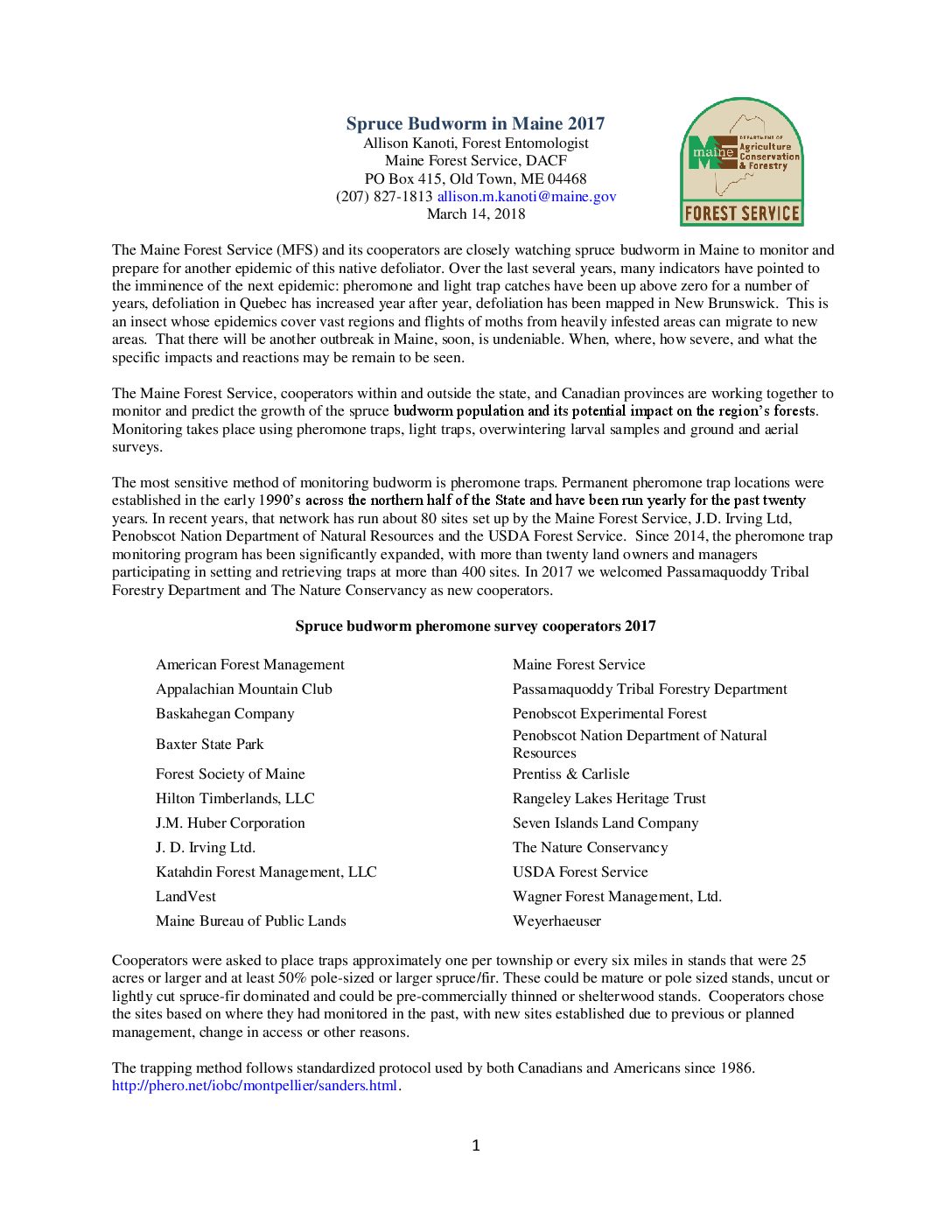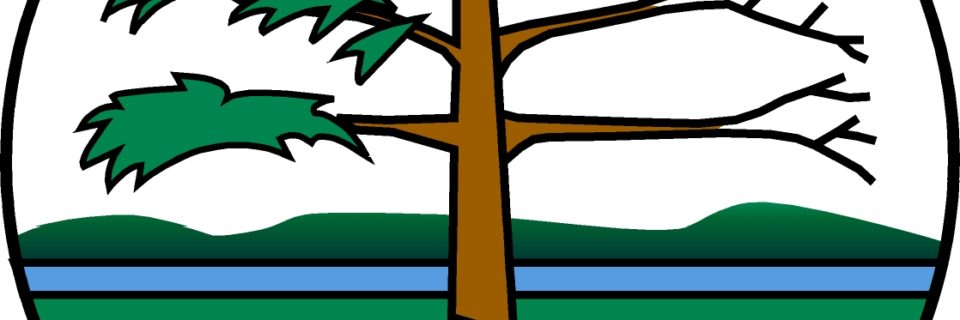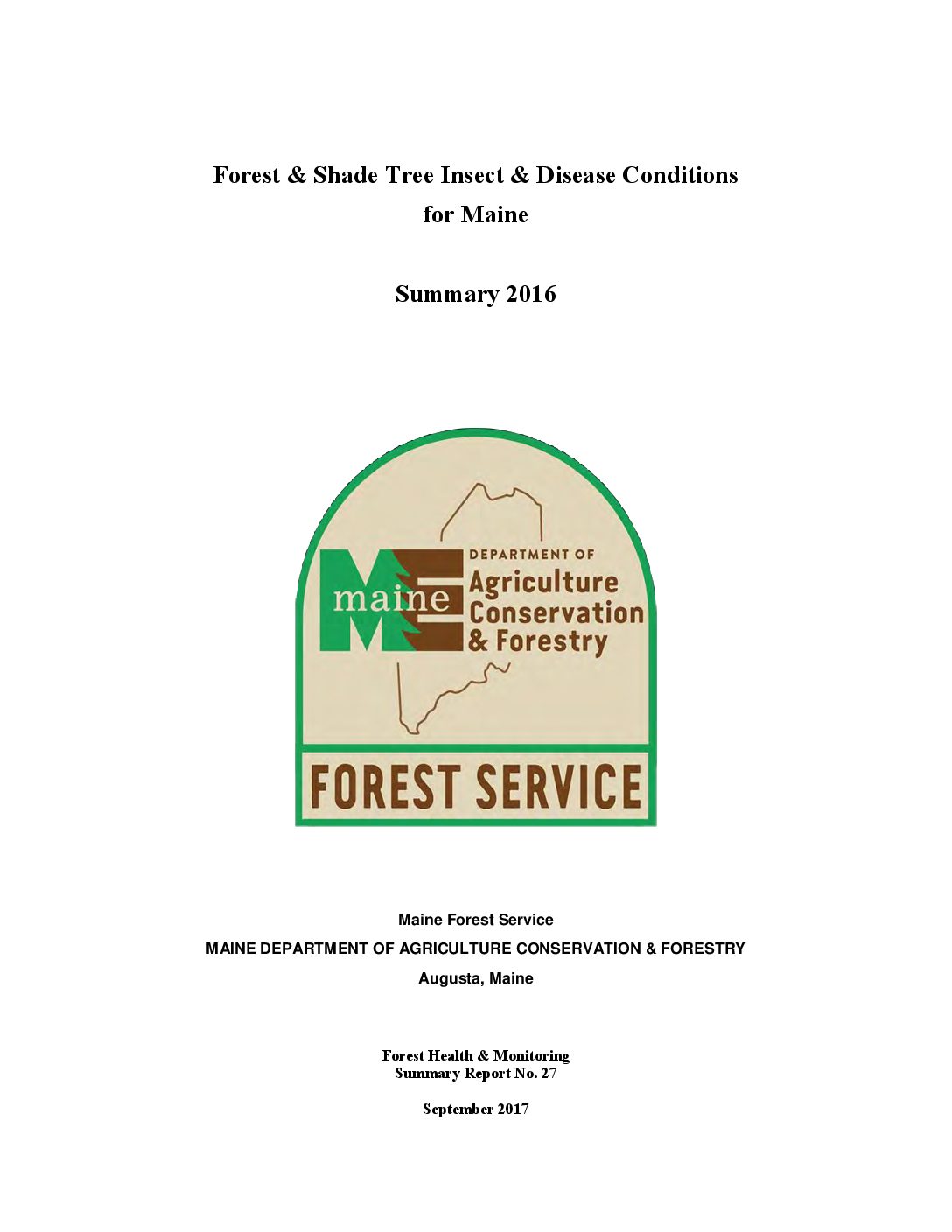The Maine Forest Service has just released a review of spruce budworm conditions in Maine based on the 2017 pheromone trap survey. Maine Forest Service 2017 Spruce Budworm Report ... Read More ›
CFRU to Host Spruce Budworm Webinar
CFRU Webinar Series Spruce Budworm: Monitoring and Early Intervention Strategies February 14, 2018, 2:00 p.m. EST The first webinar in our new CFRU series will focus on spruce budworm monitoring and early intervention strategies. Following an update on spruce budworm conditions in Maine by Allison Kanoti, Rob Johns will speak to us about the New Brunswick's monitoring, early intervention, and communication strategies employed to combat spruce budworm in the province. There will be time ... Read More ›
Maine Forest Service Releases Latest Summary of Forest Insect and Disease Conditions for Maine
The MFS has released its seasonal newsletter Forest & Shade Tree Conditions for Maine: A Summary of the 2016 Situation. ... Read More ›
What’s happening with New Brunswick’s Forest Pest Management Team this Season
The spring and summer are busy months for the Forest Pest Management Team at New Brunswick's Department of Energy and Resource Development (ERD). From the day that seasonal staff arrives in June they get to work setting SBW pheromone traps throughout the province. These traps are used as early warning signs of population growth and you can read more about them in one of our previous blog posts. After the pheromone traps are hung, our staff switches focus to two vital components of the EIS ... Read More ›
To the north, spruce budworm treatment concludes and research begins
In New Brunswick, another year of experimental treatments for the Early Intervention Strategy (EIS) have come to pass. The 2017 treatments began on June 13th, when the spruce budworm larvae were entering their mid instar developmental stage. This timing is important as the insecticides we use must be eaten by the larvae to have an affect. This year our experimental treatment area covered 150 000 ha. To read the full post from Healthy Forest Partnership, click here. ... Read More ›
Early Intervention Progress in New Brunswick
New Brunswick's early intervention efforts to prevent SBW spread is in full swing. To date, 80% of the project's total area (150,000 ha) has been treated. For more information on the early intervention strategy, visit the Healthy Forest Partnership website. ... Read More ›
New Research on Spruce Budworm
New from the Canadian Journal of Forest Research: Bottom-up factors contribute to large-scale synchrony in spruce budworm populations by Mathieu Bouchard, Jacques Regniere, & Pierre Therrien Understanding the mechanisms that cause large-scale synchrony in insect population dynamics might yield key insights for predicting potential outbreak occurrence. Here, we evaluated which environmental factors best explain synchronous population fluctuations in the spruce budworm (SBW). SBW population ... Read More ›
Balsam Fir Stand Development Post SBW-related Mortality
University of New Brunswick researchers Grant Virgin and Dave MacLean's article, Five Decades of Balsam Fir Stand Development After Spruce Budworm-related Mortality, has just been published online in Forest Ecology and Management. Highlights Five decades of stand development in spruce budworm affected plots in New Brunswick. Stand development and self-thinning patterns varied based on post-outbreak stocking. Thinned and unthinned plots had more volume at younger ages than budworm ... Read More ›
Kanoti to Provide SBW Update at Merryspring Nature Center, Camden
Tuesday March 21st, Noon-1, Camden ME. Entomologist Allison Kanoti of the Maine Forest Service will provide an update on spruce budworm in Maine at the Merryspring Nature Center in Camden. Members: Free, Non-Members $5.00. ... Read More ›


